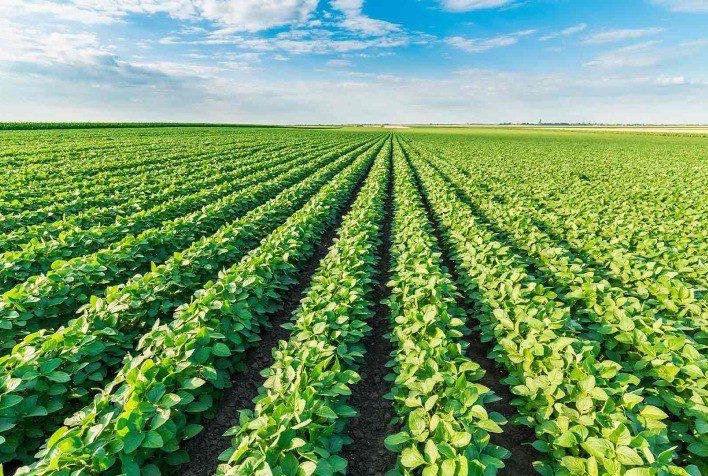For American soybean producers, 2024 unfolded as a paradoxical year; the decade’s highest planted acreage collided with an adverse price environment, contracting net returns despite notable improvements in crop yields. Amid the backdrop of shifting global demand and fluctuating input expenditures, many growers have found themselves uncomfortably squeezed by narrowing profit margins.
Soybean farmers across Arkansas increased their commitment to this legume in 2024, planting about three million acres—up nearly four percent from the previous season.Harvest reports corroborated these gains: average yields climbed to approximately 55 bushels per acre. The state’s total harvest reached a staggering 166 million bushels last autumn, which sounds remarkable unless you pay heed to what matters most at season’s end—actual profitability versus optimism.
Nevertheless, financial realities failed to echo these production achievements. Profit margins remained stubbornly depressed for a majority of producers because spot prices for soybeans dropped noticeably compared with recent years. Higher input costs compounded the situation; fertilizer and fuel expenses lingered near historical highs even as revenues shrank per bushel sold.
Examining nationwide statistics adds further nuance. Across major producing regions such as Indiana and Illinois,soybean gross revenue hovered around $608 per acre based on anticipated market rates of roughly $11.25 per bushel—a considerably lower figure than some earlier projections had led farmers to hope for late last year. Against base costs (not including leasing expenses), that left gross returns before land rent near $194 an acre for soybeans on high-productivity soils.
Scattered evidence illuminates why profitability eroded so rapidly—even though Arkansas growers harvested larger volumes than ever before (and certain Midwestern operations boasted respectable output). Farmers throughout much of the US faced total cost estimates bordering $414 an acre (land rent not included), leaving vrey slim cushions if local cash bids skidded below predicted seasonal averages or if contracts went unfulfilled due to weather-related delays or transportation bottlenecks–which occasionally they didn’t when teams managed logistics effectively enough.
There is some debate about future prospects; some analysts speculate that government interventions or unexpected upticks in international demand could catalyze minor rebounds later this marketing year, but no consensus has emerged regarding timing or magnitude thereof.
An agronomic perspective brings its own complications: According to yield monitoring data released by university extension specialists this spring semester—and despite longer growing seasons facilitated by clement weather patterns—many farm operators lamented that net proceeds were insufficiently robust given intense application regimes required for optimal plant health under current pest pressures and erratic rainfall distribution throughout critical pod-filling phases.
A curious contradiction deserves brief mention here: even though US Department of Agriculture trendlines suggested national average soybean yield would approach approximately 50-51 bushels per acre, Arkansas managed greater output while concurrently enduring steeper relative margin compression—a growth which flummoxes conventional wisdom but highlights regional market complexities not always evident from aggregate data dumps one encounters elsewhere (although it might very well be argued differently).
More perplexing still was how governmental support programs factored into farm economics in only a limited capacity during ’24—ARC-CO payments where triggered created nominal advantages yet did little to seal underlying fiscal fissures experienced widely among mid-sized and smaller enterprises striving post-pandemic recovery trajectories faster than inflationary cost surges permitted them successively each quarter as January began anew without sufficient relief mechanisms codified federally during March appropriations cycles before summer droughts became apparent southward along river deltas nearing peak bloom periods again unexpectedly soon after initial flowering ended later that month far eastwards anyway.
Conversely—not incongruously—farmers who practiced diverse crop rotations observed marginal resilience in overall operation-level profits thanks partly due both hedged input purchasing strategies adopted circa late winter months and shrewd forward contracting leveraging siloed stocks holding premium protein content lots just prior export sales deadlines set forth by multinational grain handlers brokering Asian trades out-of-season sporadically less predictably now than prior decades’ experience forecasts might plausibly suggest otherwise had circumstances reversed themselves only slightly sooner perhaps during key negotiation windows customary annually abroad those ports most reliant upon import quotas rising globally each solstice nearly reliably since outset mid-2010s trade agreements ratified jointly then enforced locally patchily region-to-region after all was decided anyway arguably too hastily!
In summation: A record-setting Arkansas planting season coincided sharply with unfavorable market trends nation-wide leading inexorably toward diminished earnings—yield triumphs notwithstanding—for much of America’s heartland soybean sector throughout calendar year twenty-twenty-four ultimately confirming producers’ anxieties over commodity volatility even as collective knowledge pushes onward seeking stability amidst agricultural uncertainty once more looming ahead into next growing cycle unpredictably soon rather frustratingly so yet again now really no surprise any longer amongst those remaining judicious few persevering still within industry ranks day-to-day today actually already planning pre-harvest purchases apropos inputs amid forecasts never quite aligning perfectly nor reliably much unlike years past remembered fondly only just recently enough somehow surely not forgotten nor learned fully ever at all yet either completely truly certainly perhaps!









